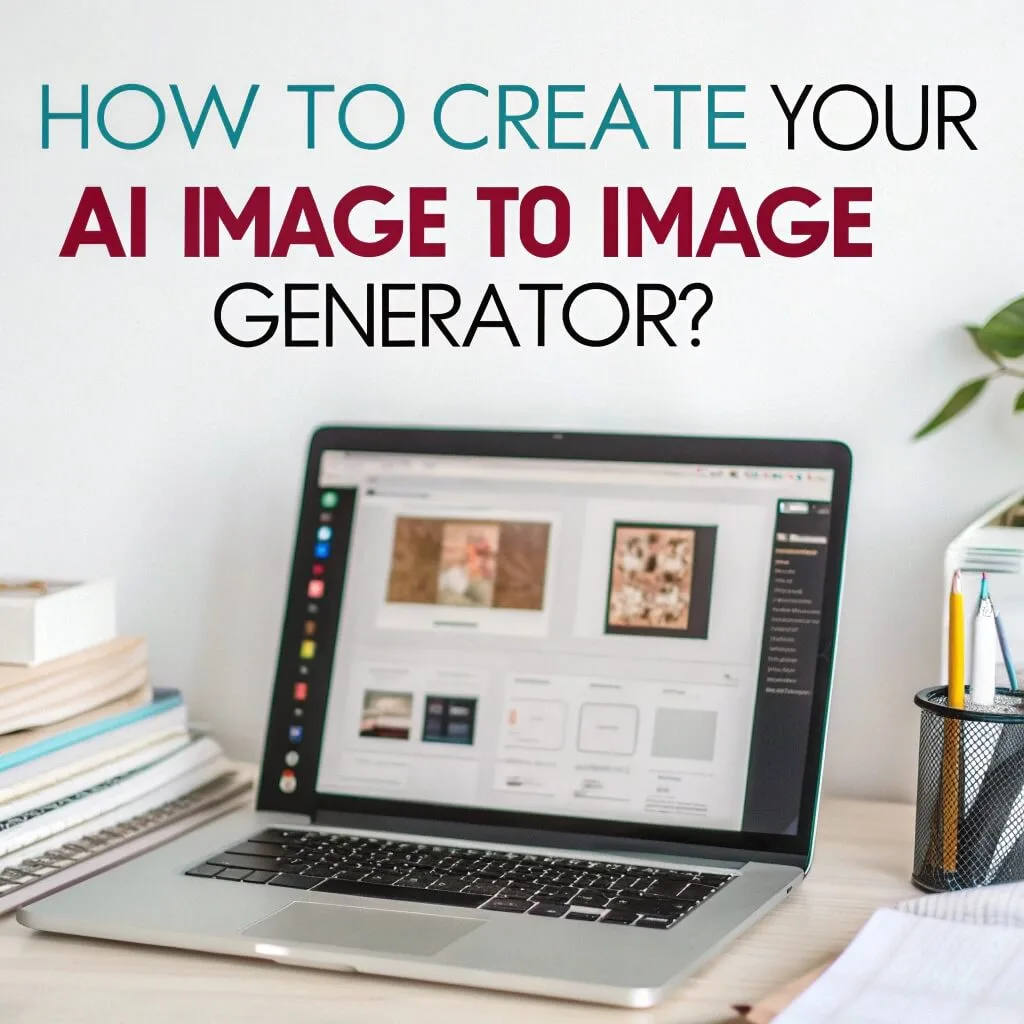In recent years, artificial intelligence (AI) has revolutionized the way we approach creativity, design, and art. One of the most exciting developments in this area is the rise of AI-driven image-to-image generation, where users can input an image and manipulate it to create new variations, enhancements, or entirely new images.
This technology has opened up vast possibilities for artists, designers, and hobbyists to explore innovative visual concepts with ease. If you’ve ever wondered how to create your AI image to image generator, here’s a comprehensive guide to get you started.
What is an Image-to-Image Generator?
An image-to-image generator is an AI model designed to take an input image and transform it into a new one based on specific instructions or algorithms. These transformations can vary widely, including things like converting sketches into fully realized images, applying filters, enhancing images, or even altering the style or elements within the image. Generative Adversarial Networks (GANs) are one of the most popular methods for this type of image generation, and they have proven to be incredibly powerful for creative applications.
Why Build Your Own AI Image-to-Image Generator?
There are several reasons why creating your own image-to-image generator can be both exciting and beneficial:
- Customization: By building your own model, you can tailor it to your specific needs, whether you want it to focus on a particular type of artwork, style transfer, or even text-based prompts.
- Skill Development: Creating your own AI image generator helps you learn valuable skills related to machine learning, neural networks, and AI-driven art tools.
- Control: With your own model, you gain full control over how the AI works, which can be important for creative professionals who need a personalized tool.
Steps to Build Your Own AI Image-to-Image Generator
Creating an AI image-to-image generator requires a combination of machine learning knowledge, programming skills, and the right tools. Here are the steps to help you get started:
1. Understand the Basics of GANs and Neural Networks
Before diving into building an image-to-image generator, it’s crucial to have a foundational understanding of how Generative Adversarial Networks (GANs) and deep learning models work.
- Generative Adversarial Networks (GANs) consist of two main components: a generator and a discriminator. The generator creates new images, while the discriminator evaluates them. The goal is for the generator to create realistic images that fool the discriminator.
- Convolutional Neural Networks (CNNs) are often used in image-related tasks, as they are effective at recognizing patterns and features within images.
Study these concepts through online courses, tutorials, or academic papers to get a better understanding of how these models work.
2. Choose Your Framework and Tools
Once you have a basic understanding of the concepts, the next step is to decide on the tools and frameworks you’ll use to build your generator. Several popular machine learning frameworks are available that can help you develop your AI model.
- TensorFlow and Keras: TensorFlow is an open-source framework for machine learning, and Keras is a high-level neural networks API that runs on top of TensorFlow. Both are widely used for building deep learning models, including image generators.
- PyTorch: PyTorch is another popular deep learning framework known for its flexibility and ease of use, especially for research purposes.
- RunwayML: If you’re looking for an easier approach, RunwayML offers a user-friendly interface for creative projects, including AI image generation tools, and can be used without extensive programming knowledge.
3. Collect and Prepare Your Dataset
An image-to-image generator requires a dataset to train on. The quality of the dataset will significantly impact the results. There are two ways to approach this:
- Use Existing Datasets: Many public datasets are available for various domains, such as face generation, sketches, and artwork. For example, the Cityscapes Dataset is used for semantic image-to-image translation tasks (e.g., turning a street scene from a sketch into a detailed image).
- Create Your Own Dataset: If you have a specific idea in mind, you may need to curate your own dataset. Collect images that match the style, subject, or characteristics you want your generator to learn.
After gathering the dataset, you will need to preprocess the images, which typically involves resizing, normalizing, and augmenting the images to improve the model’s learning process.
4. Train the AI Model
Training an image-to-image generator involves feeding the preprocessed dataset into the chosen framework (e.g., TensorFlow or PyTorch) and running the training process. Depending on the complexity of your model and the size of the dataset, training can take hours to weeks.
The most common architectures for image-to-image generation tasks include:
- Pix2Pix: A GAN-based model for paired image-to-image translation, where each input image has a corresponding output image.
- CycleGAN: A GAN-based model that can learn image-to-image translation without requiring paired images, which is useful for tasks like style transfer or unpaired image generation.
During training, the model will learn to generate images based on the patterns and features it detects in the input data. Be sure to monitor the loss functions and adjust hyperparameters like learning rate and batch size to achieve optimal results.
5. Evaluate and Fine-Tune
Once the model is trained, evaluate its performance by testing it on new, unseen images. You’ll want to assess the quality of the generated images based on clarity, realism, and whether the model captures the intended transformation accurately.
If the results aren’t satisfactory, you can:
- Fine-tune the model by adjusting the architecture, hyperparameters, or dataset.
- Increase the dataset size or enhance the diversity of images to improve the generalization of the model.
6. Deploy Your Model
Once you’re satisfied with your AI image generator, you can deploy it in a web app, software tool, or desktop application. Many frameworks offer tools for deploying machine learning models, such as:
- TensorFlow.js for running models directly in the browser.
- Flask or FastAPI for building simple web APIs for model inference.
- Docker for containerizing and deploying models.
This allows you to easily generate images using the trained AI model in real-time, making your generator accessible to others or enabling you to use it for your own creative projects.
7. Experiment and Iterate
AI image generation is an iterative process. You can continuously experiment with different models, datasets, and approaches to refine the quality of the images and explore new creative possibilities.
Conclusion
Building your own AI image-to-image generator is an exciting and rewarding challenge. While it requires a solid understanding of machine learning principles and coding skills, it also opens up endless possibilities for creative expression. By following the steps outlined above, you can create your own custom image generator and begin harnessing the power of AI to transform images in unique and imaginative ways.


